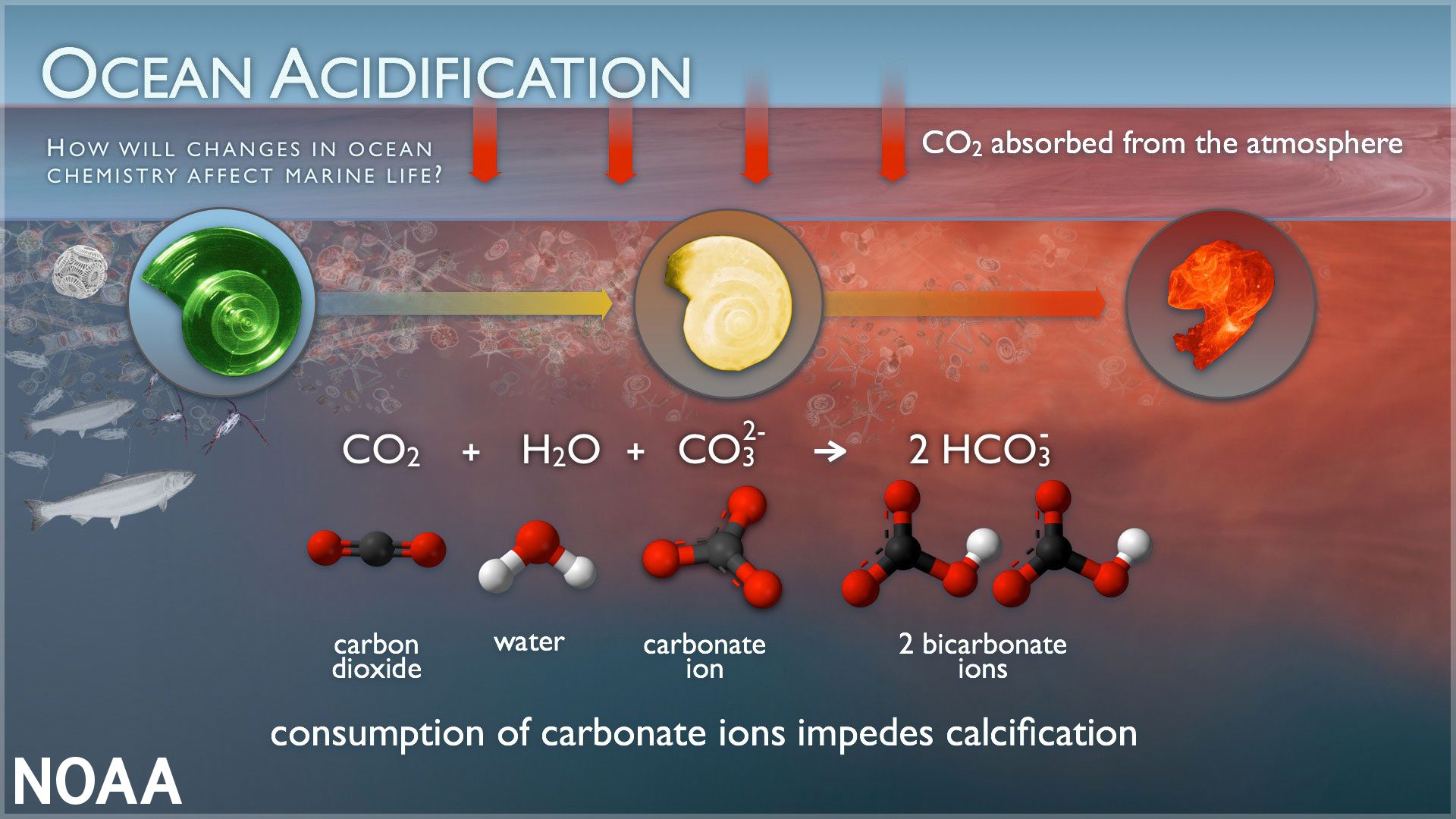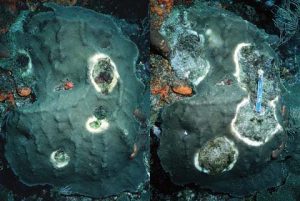Coral reefs are an extremely sensitive habitat that are vital to the health of our oceans. Yet, 75% of reefs are at risk from local and global threats. A major cause of their vulnerability is that coral reefs are found in shallow coastal waters making them susceptible to the impacts of human activities.

How Does Climate Change Affect Coral Reefs?
The greatest threat to coral reefs is climate change and the subsequent rising ocean temperatures and ocean acidification. These are global level threats that have the potential to wipe out large numbers of coral reefs all around the planet.
There are also destructive natural phenomena threatening coral reefs that are magnified by climate change, such as El Niño, hurricanes, and diseases. Even though these are naturally occurring events, they still have the potential to do substantial damage to reefs. And these events are especially threatening if they start occurring more frequently, or more intensely, with less time between events for the reefs to recover.
How Does Ocean Acidification Affect Coral Reefs?

Ocean acidification is caused by increasing amounts of CO2 being absorbed by the ocean. As we have produced more CO2, the ocean has sequestered more of it, leading to a 30% increase in ocean acidity since the Industrial Revolution began. Ocean acidification makes it harder for coral reefs to generate calcium carbonate, which stunts their growth and structural integrity.
Local Threats to Coral Reefs
But not all threats to coral reefs are global in nature. Some threats are specific to a local area, based on the specific climate, population, and people’s way of life found in that region.
How Does Pollution Affect Coral Reefs?
Trash such as plastic bottles, plastic bags, and microplastics make up a large amount of the physical pollution impacting coral reefs. Microplastics have even been found in the coral reefs located around the Republic of Palau, which is home to some of the most pristine coral reefs in the world.
Runoff from construction, mining and farming practices, such as sediments, fertilizers and toxic substances, make up the bulk of the biological and chemical pollution affecting the reefs. The coral reef pollution caused by industrial waste is devastating the delicate ecosystem, leading to the loss of vibrant marine life and the deterioration of coral structures.
How Does Overfishing Affect Coral Reefs?
Destructive fishing practices, such as dredging and the use of cyanide and dynamite, inflict considerable damage to coral reefs. Rampant dynamite fishing has devastated much of Indonesia’s once vibrant coral reefs. In addition, the collecting of live corals and fish from coral reefs to sell in the aquarium market is very harmful.
Coastal Development Effects on Coral Reefs?
The rapid development of coastal areas for agricultural, residential, and commercial purposes has led to an increase in coastal deforestation and coastal erosion. This in turn can be connected to the earlier mentioned problem of runoff. With less of a buffer zone, more pollutants can find their way into the ocean and impact coral reefs. This, along with rising ocean temperatures, is one of the major reasons the Great Barrier Reef has been in decline for the last three decades.
Coral Reef Diseases
 Coral disease typically occurs as a response to a stressor such as bacteria, a virus, increased sea temperature, or pollution. As these stressors become more prevalent, the frequency of disease increases, though the exact causes of coral disease are still unknown. Some examples of coral diseases are black-band disease, discolored spots, red-band disease, and yellow-blotch/band disease, which all appear as discolored bands or spots on the outside of coral. These diseases move across the coral’s exterior and consume all living tissue leaving behind just the coral skeleton. When the skeleton is exposed, it becomes a breeding ground for algae and invertebrates, leading to an overall decline in the reef’s heath, from which it is unlikely to recover.
Coral disease typically occurs as a response to a stressor such as bacteria, a virus, increased sea temperature, or pollution. As these stressors become more prevalent, the frequency of disease increases, though the exact causes of coral disease are still unknown. Some examples of coral diseases are black-band disease, discolored spots, red-band disease, and yellow-blotch/band disease, which all appear as discolored bands or spots on the outside of coral. These diseases move across the coral’s exterior and consume all living tissue leaving behind just the coral skeleton. When the skeleton is exposed, it becomes a breeding ground for algae and invertebrates, leading to an overall decline in the reef’s heath, from which it is unlikely to recover.
State Of Coral Reefs in the World Today
As it stands today the number of reefs in the Caribbean, West Indian Ocean, and off the coast of Australia have all been significantly diminished compared to the original numbers once found in those waters. Reefs all around the globe are facing unprecedented challenges that pose the threat of complete annihilation. Immediate action is needed in order to preserve these integral ecosystems for the future health of our great blue planet.
Image credits: Colorful coral (Colorful coral reef and blue seabed by thomaseder151270435398 on Vecteezy); Ocean acidification (Ocean acidification by the National Oceanic and Atmospheric Administration); Coral with yellow-band disease (Yellow-band disease by the National Oceanic and Atmospheric Administration)


